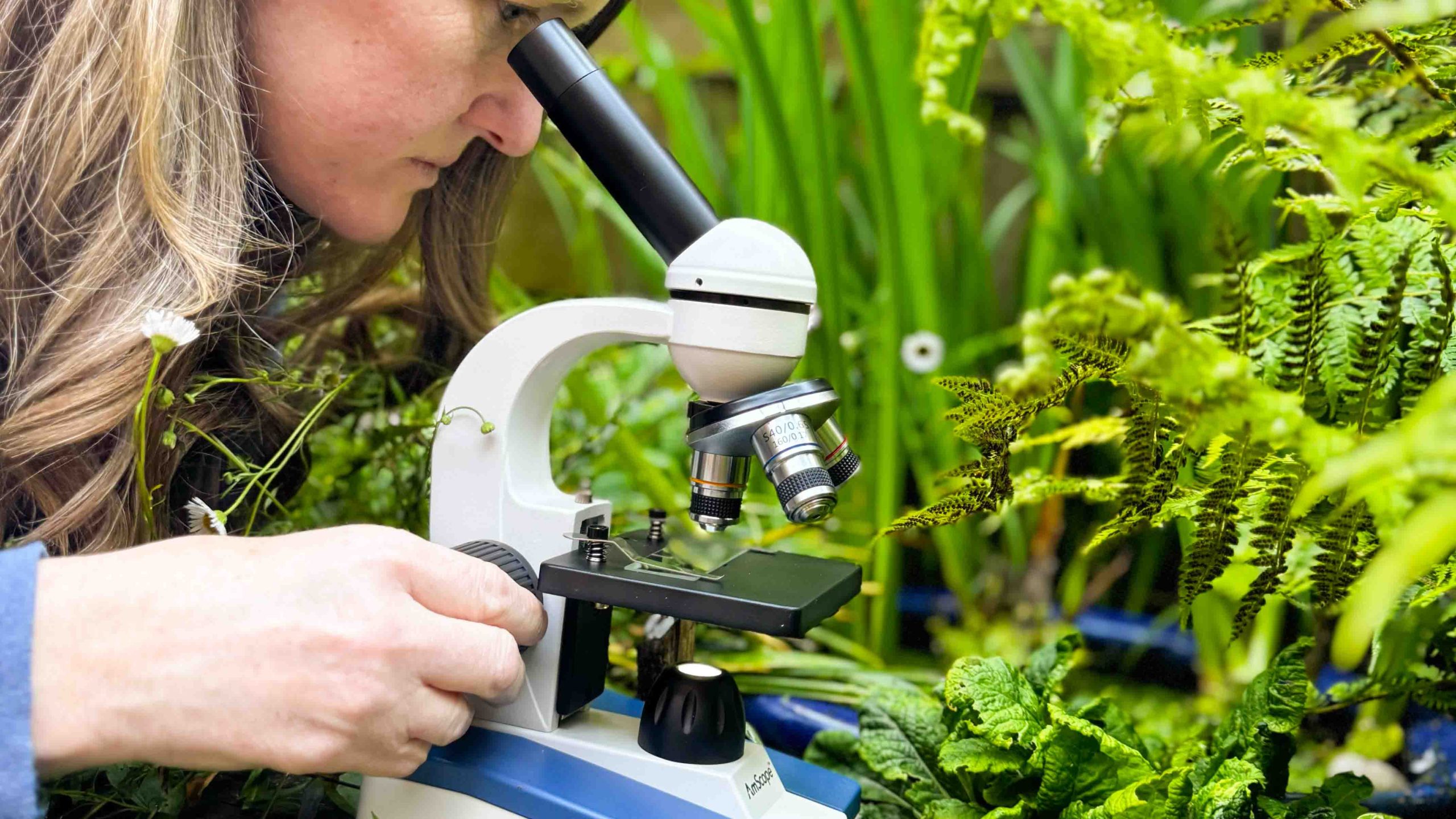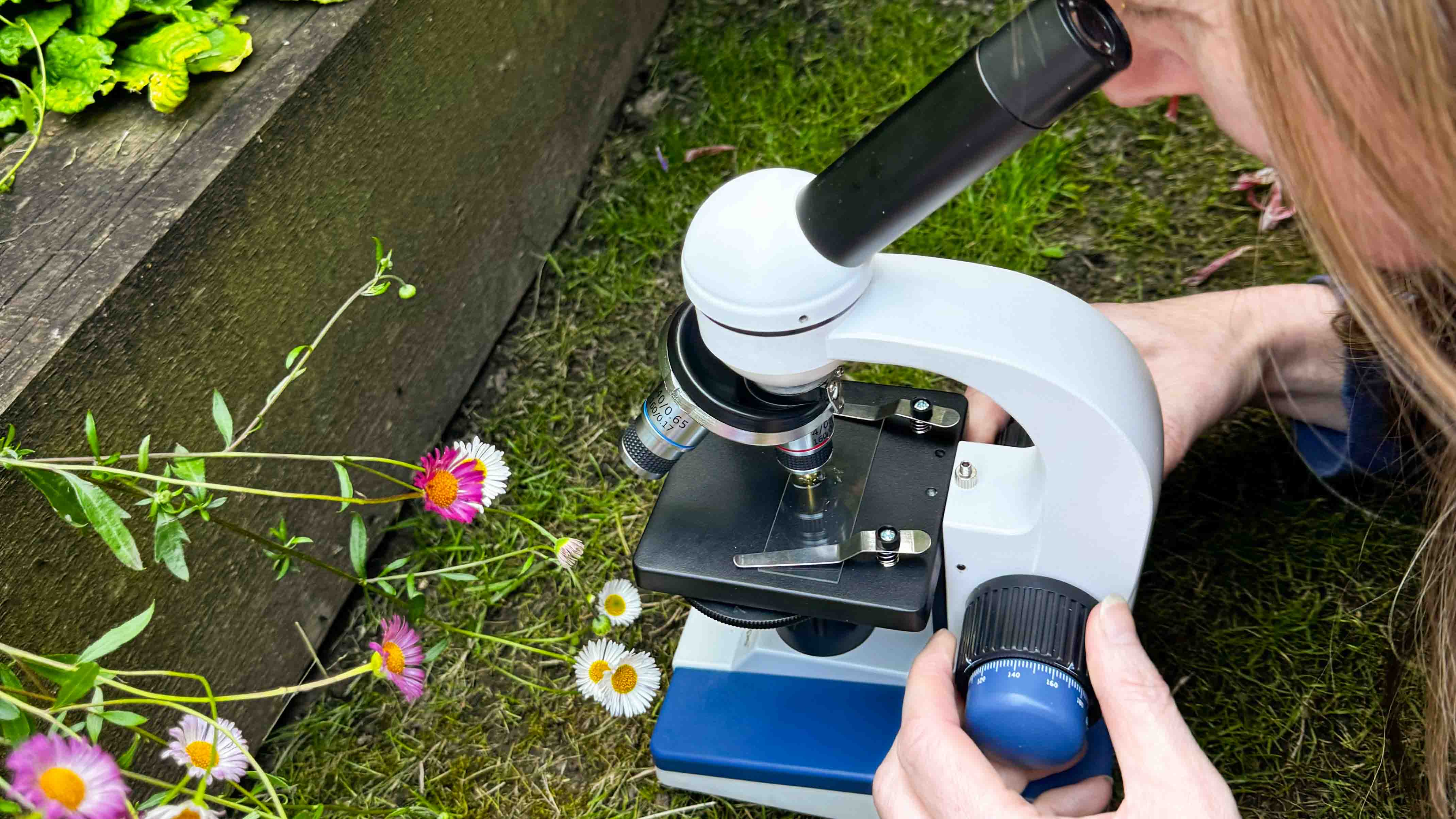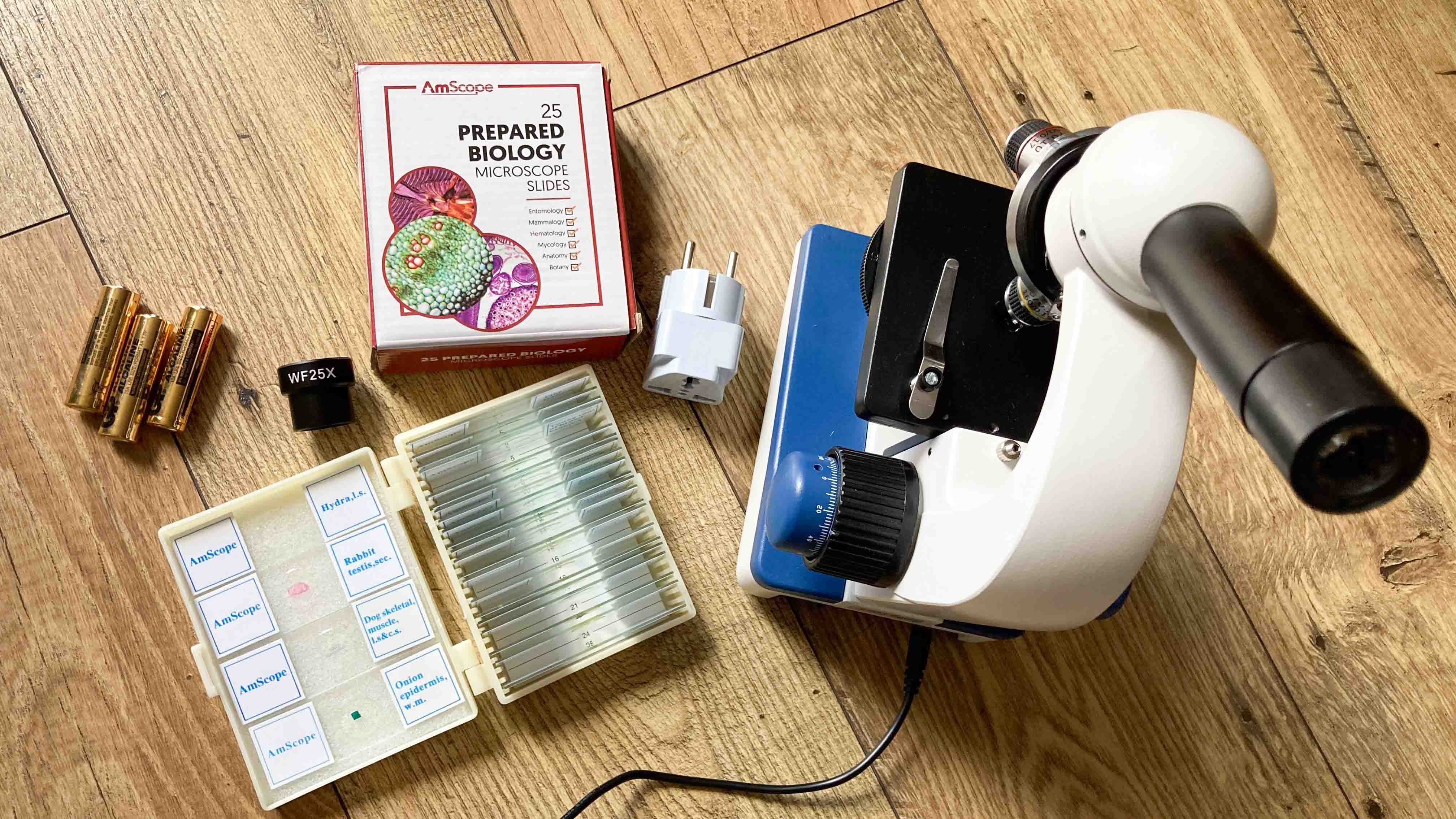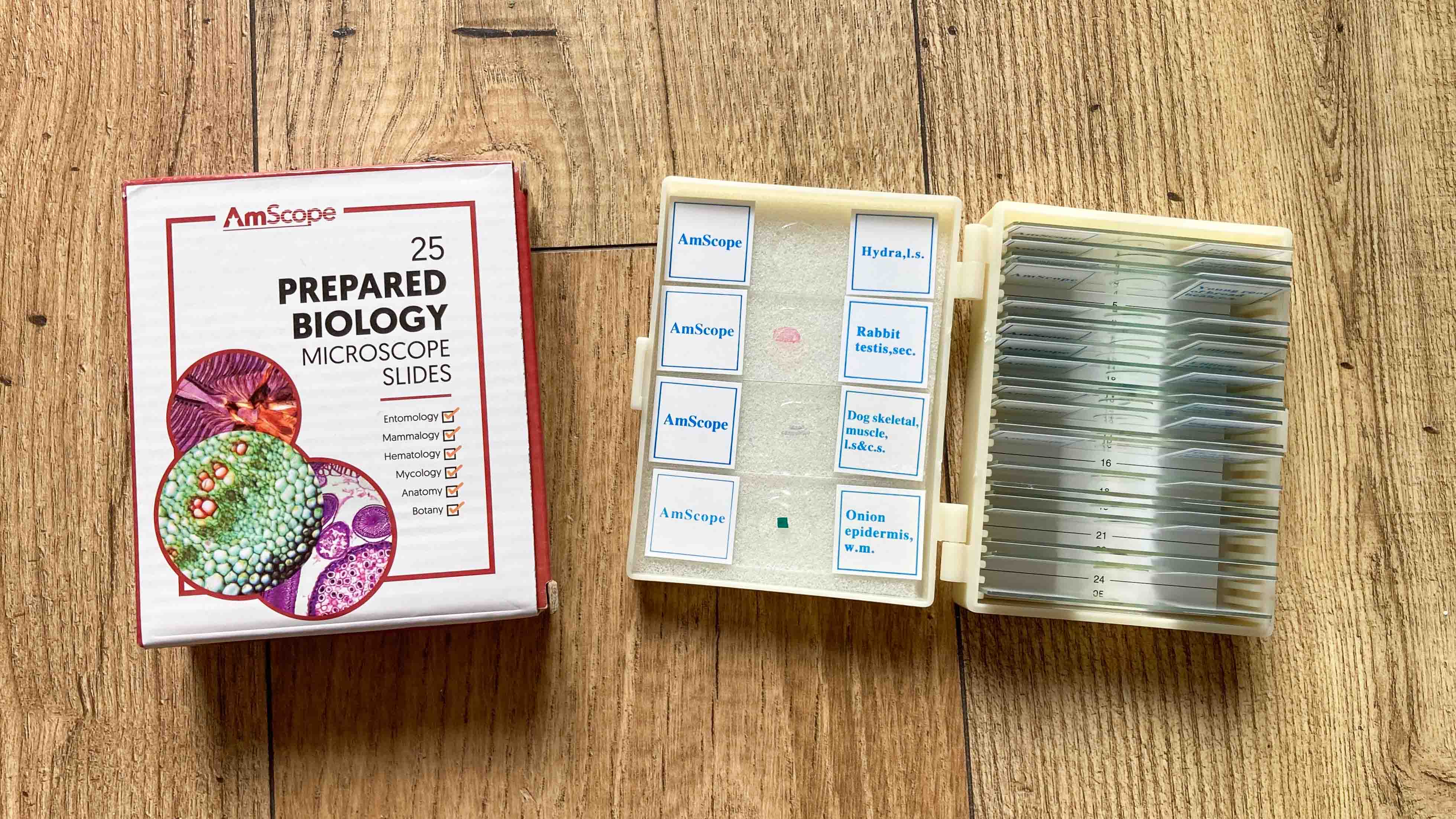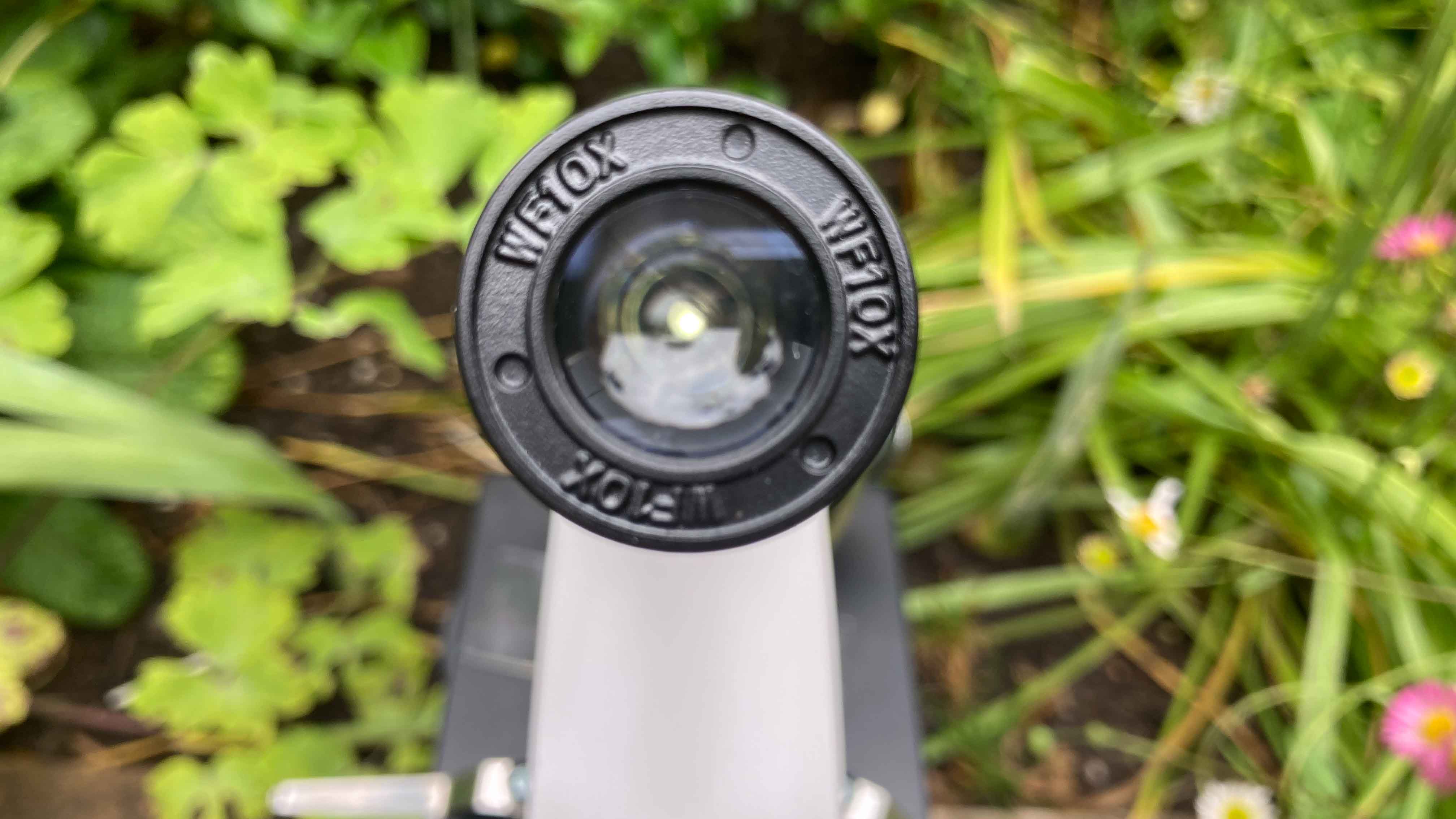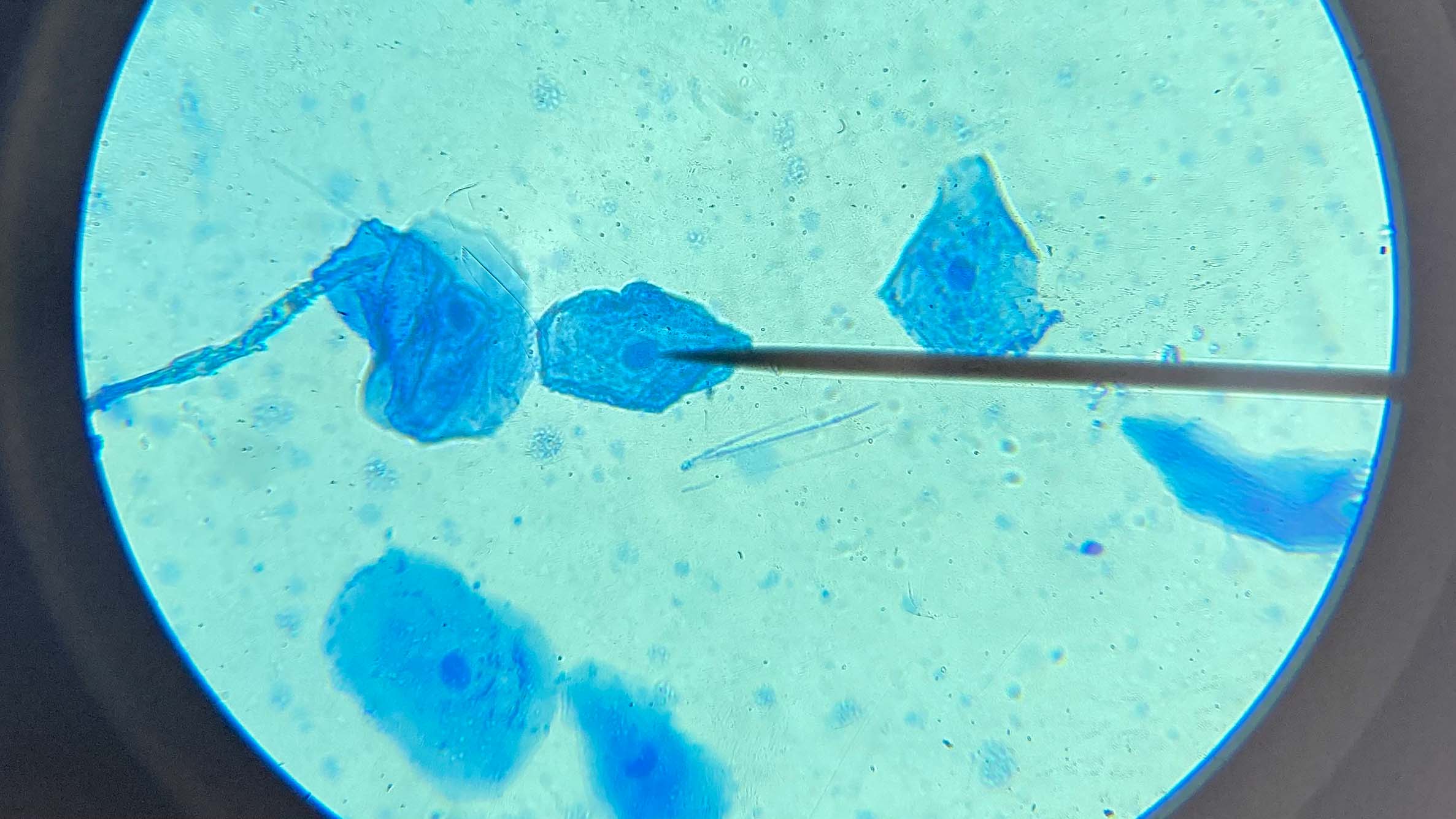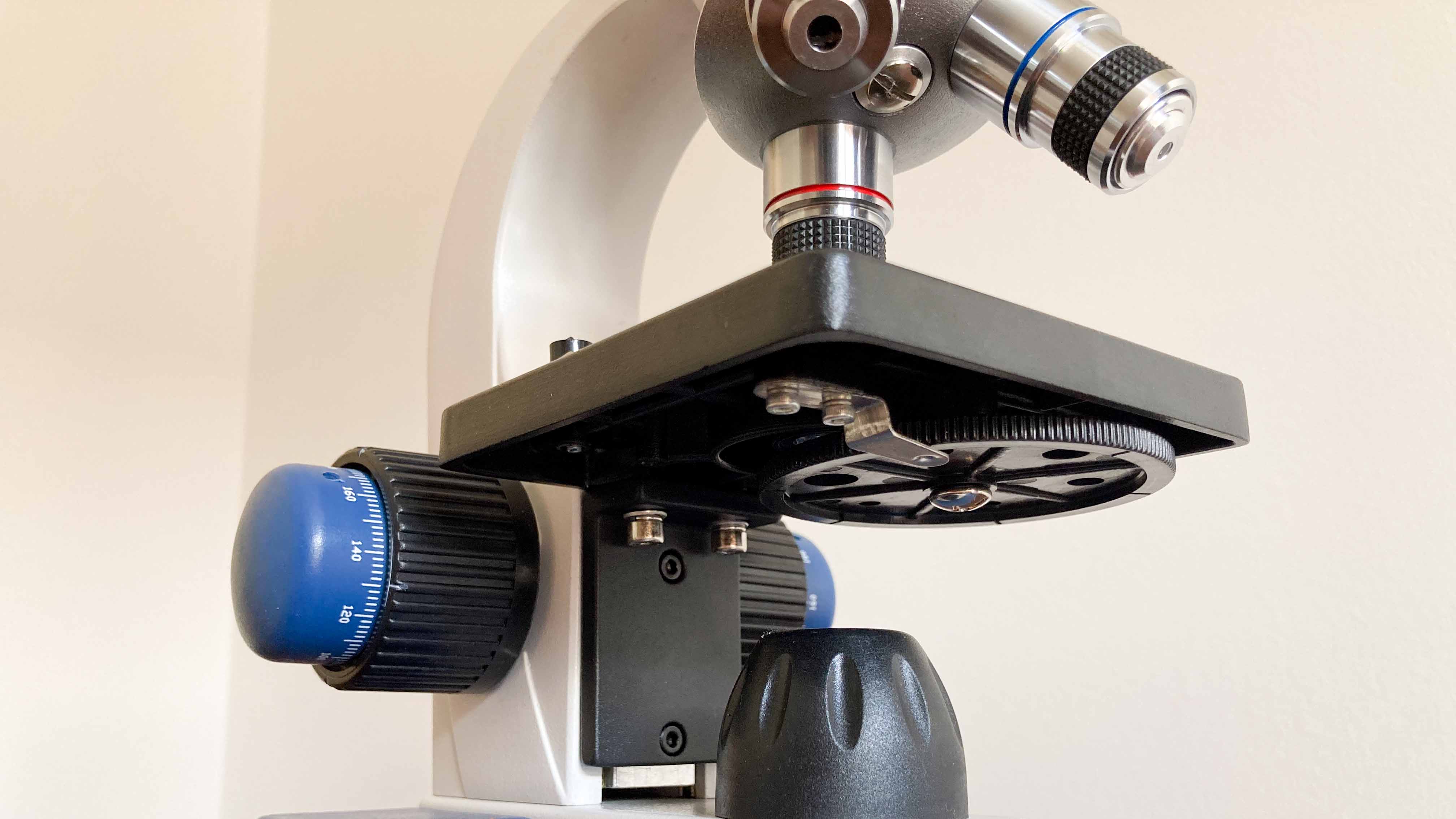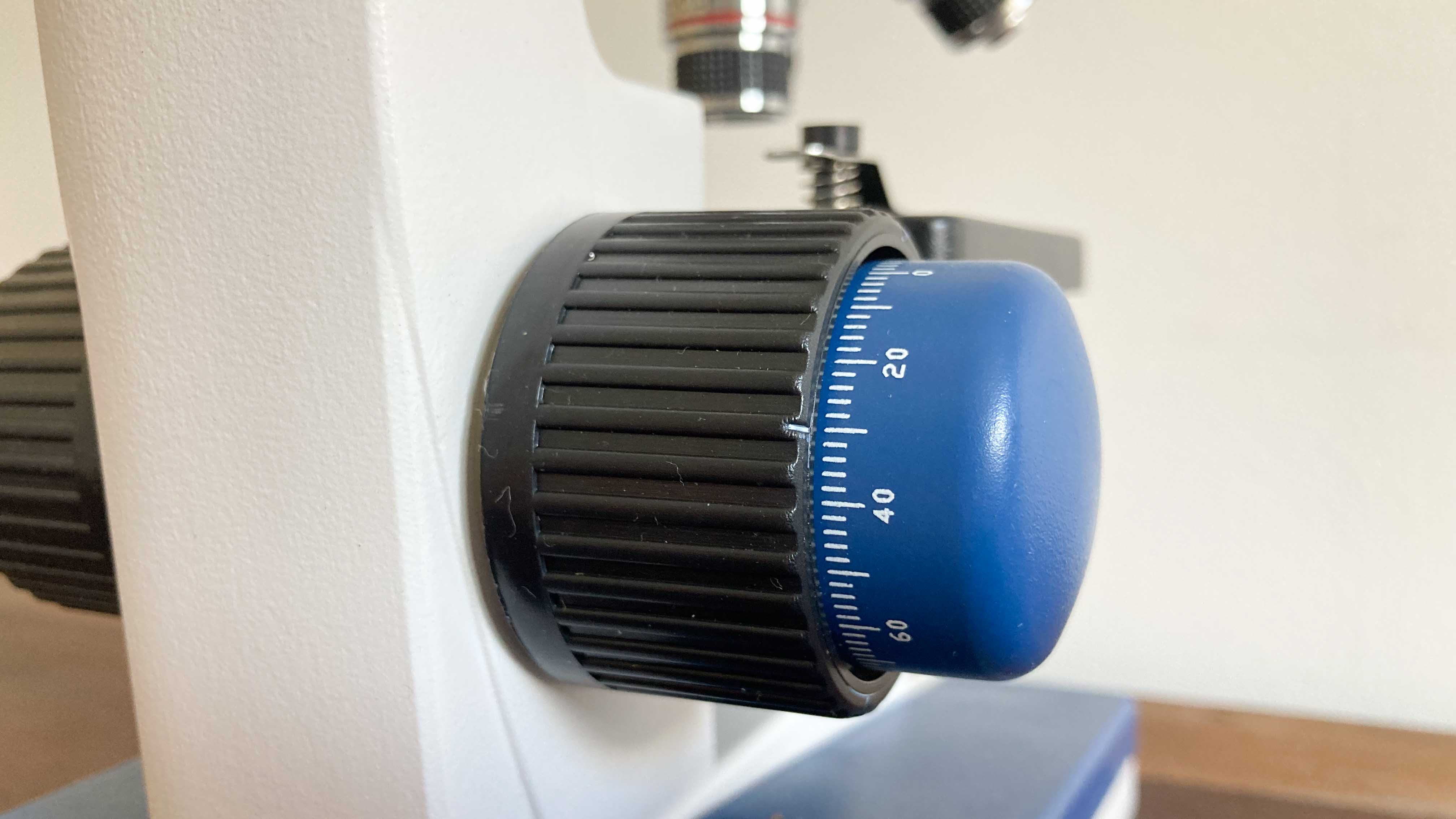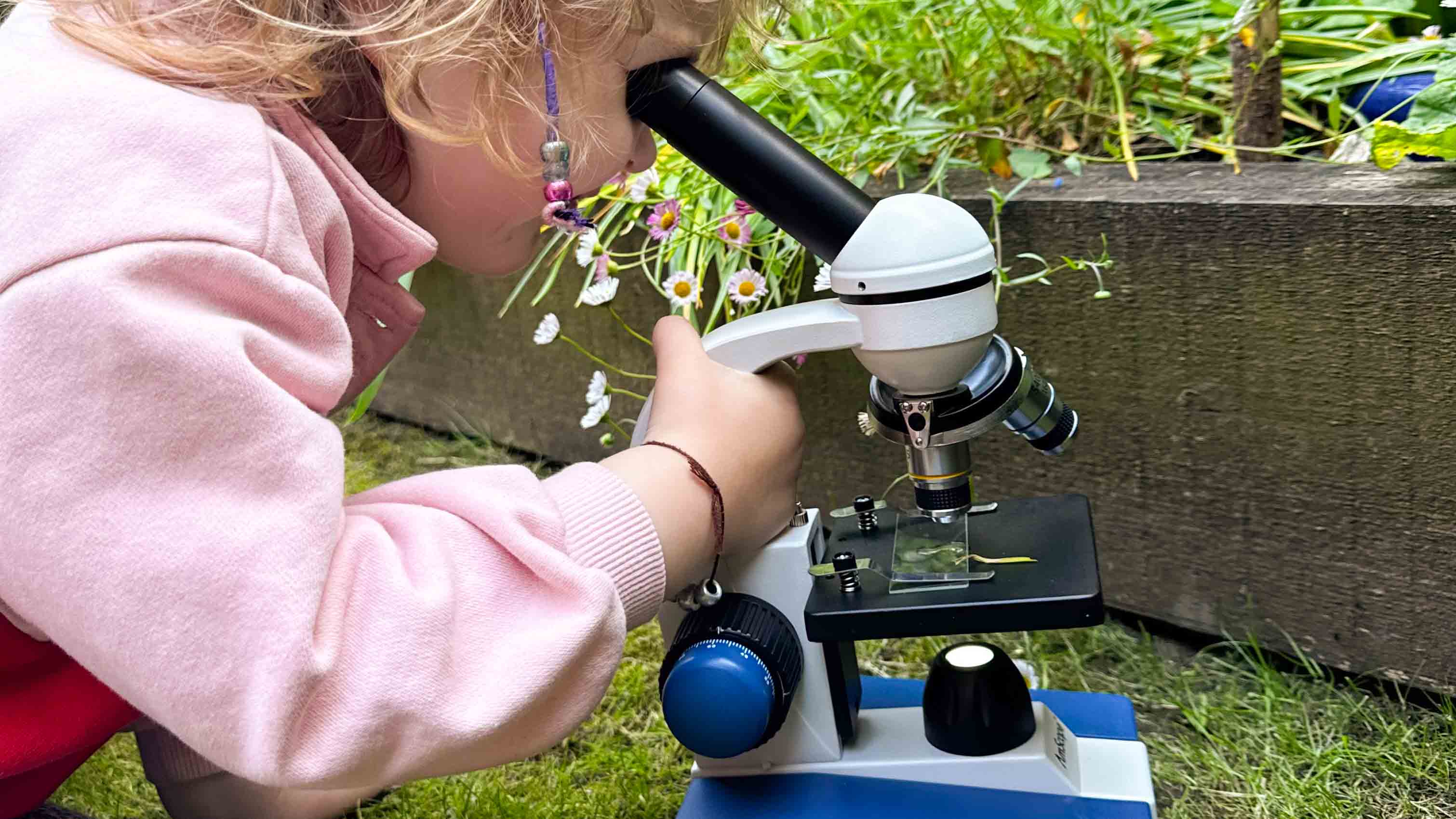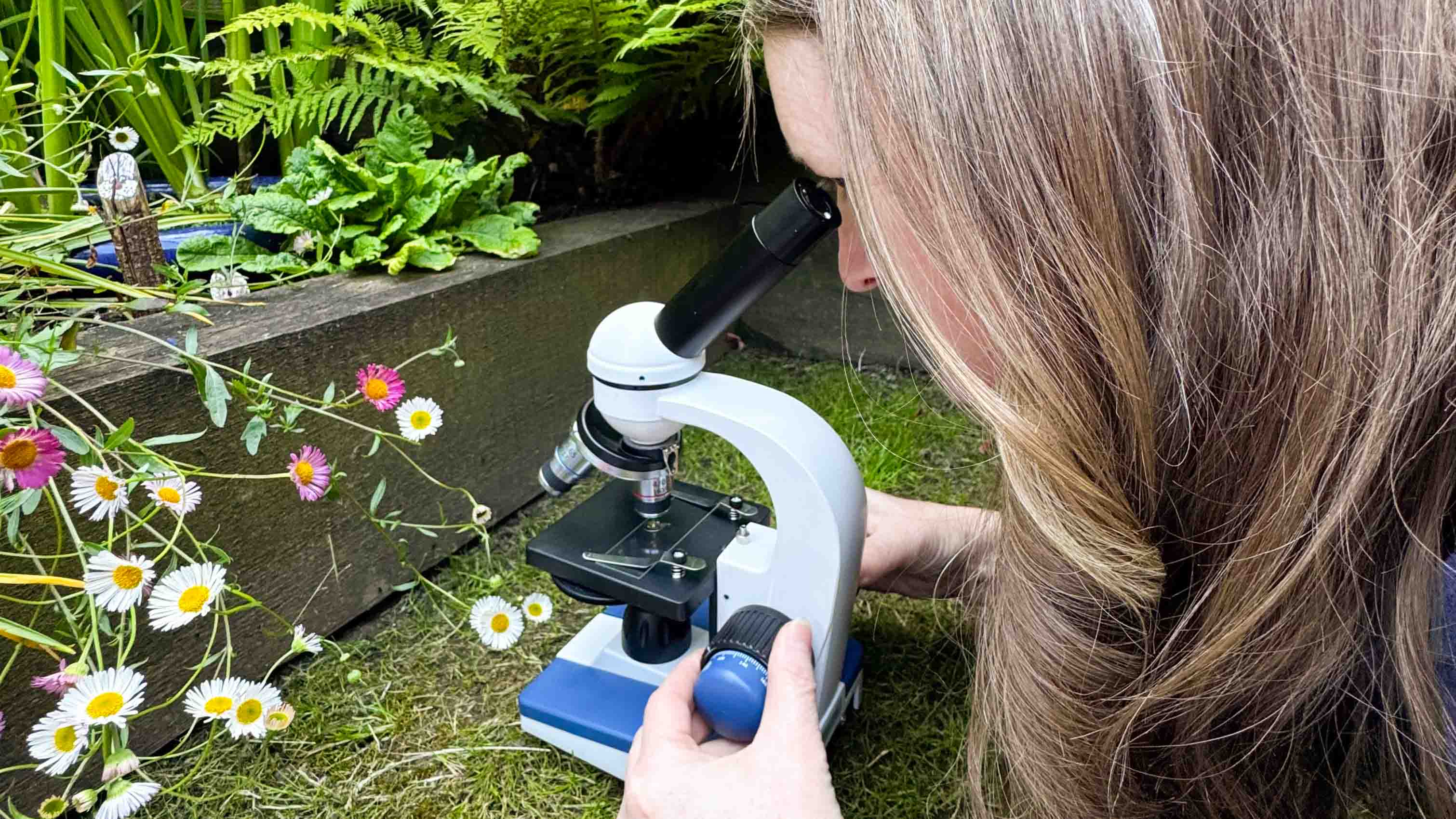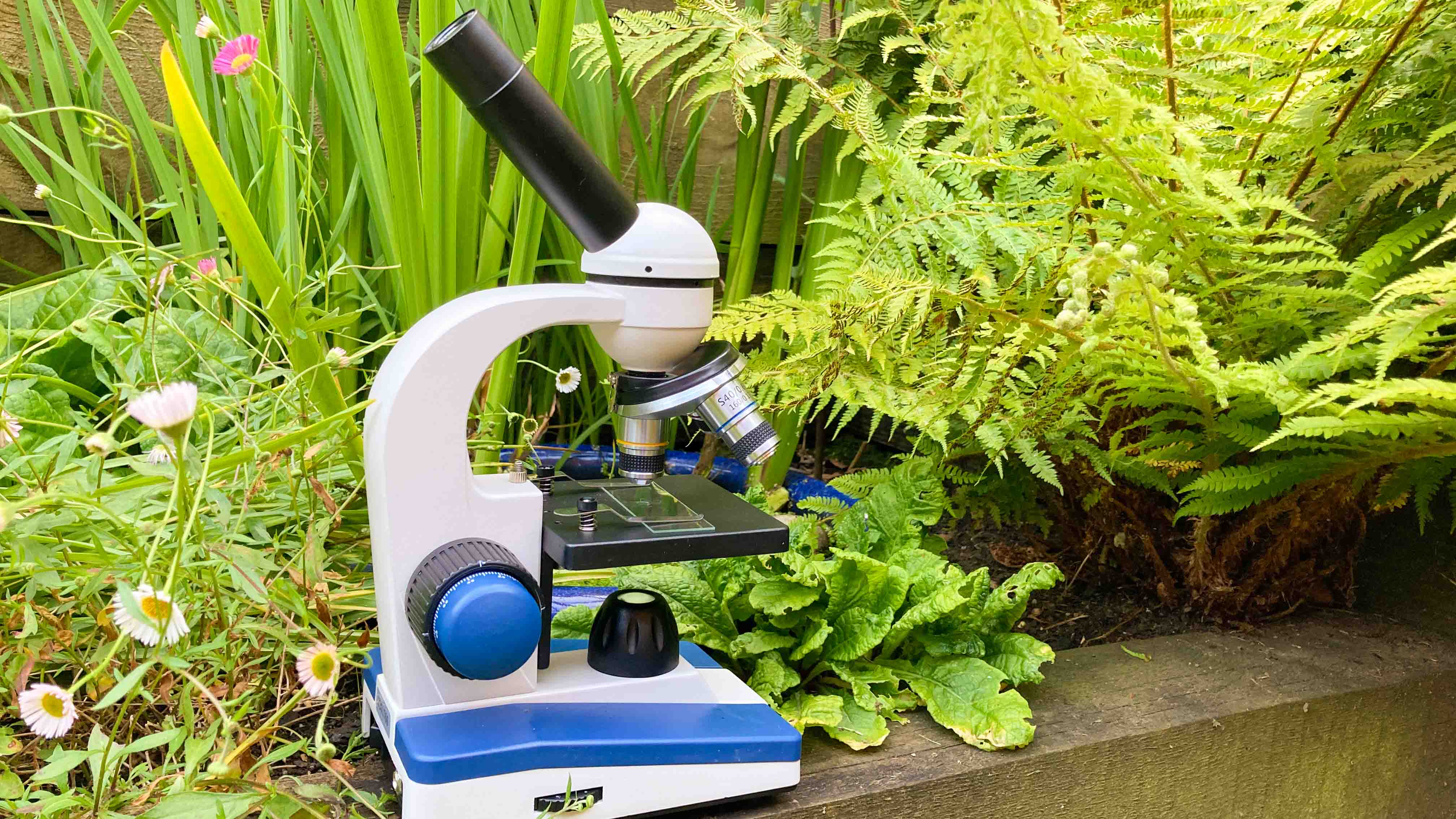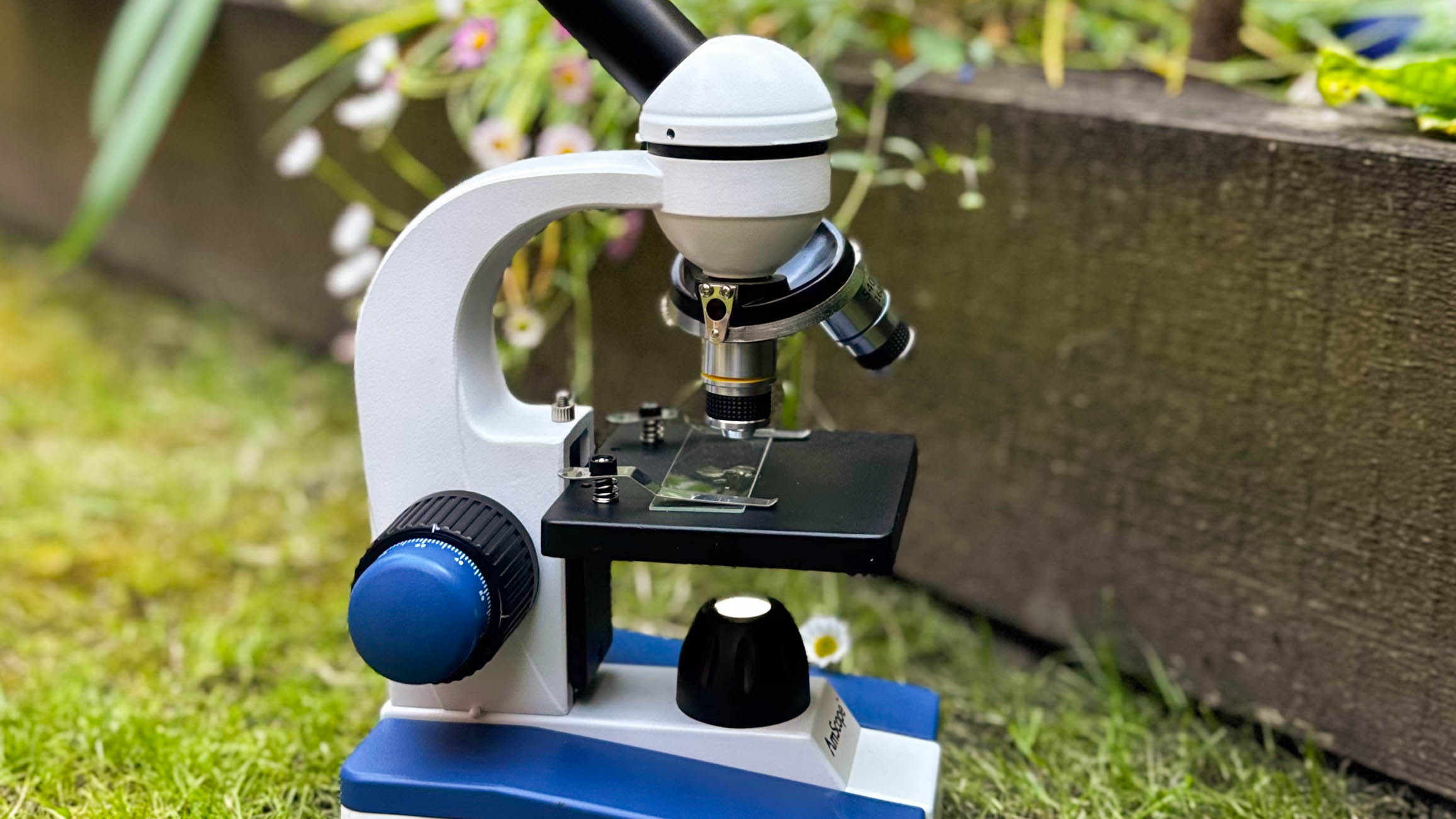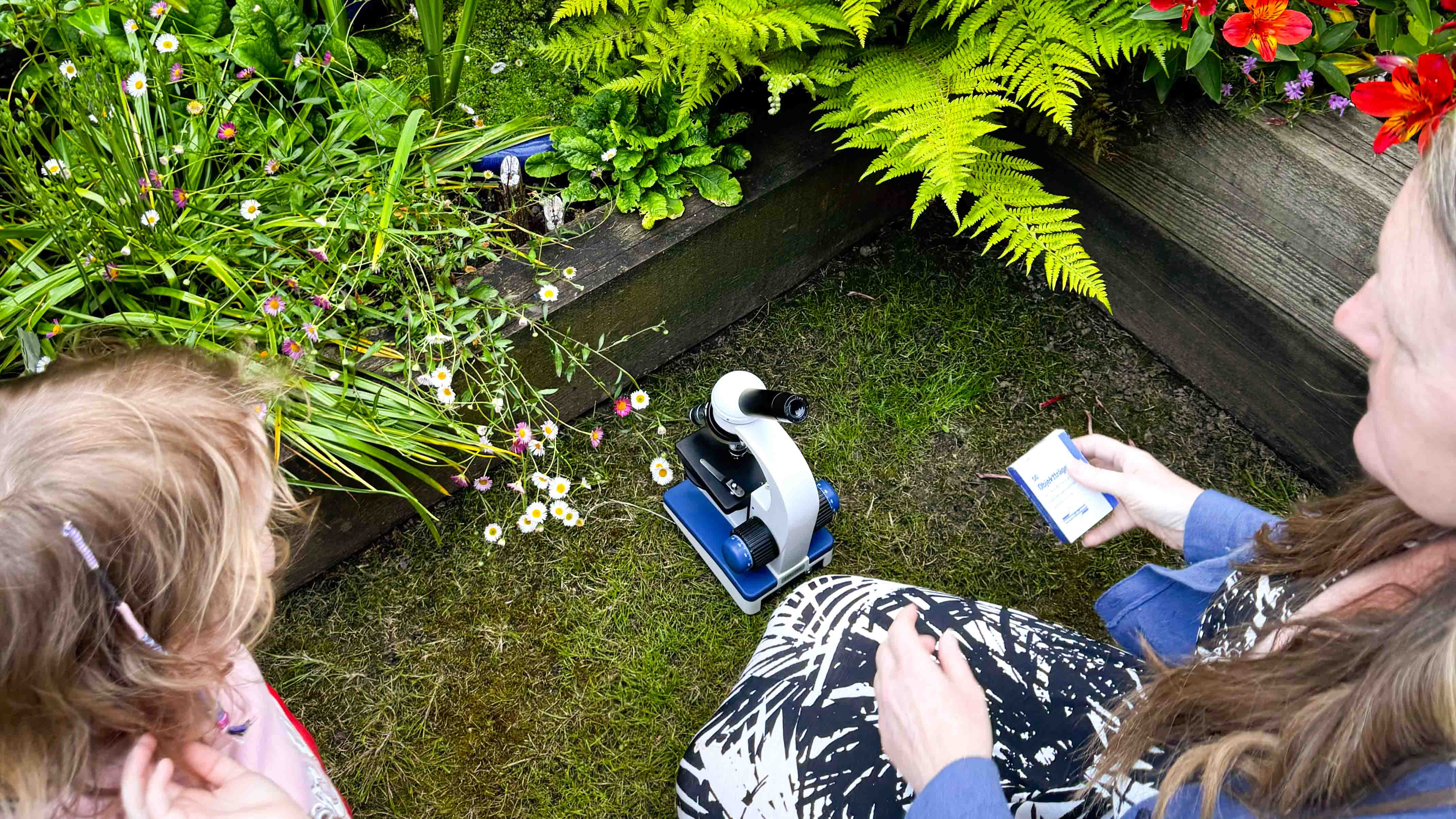Our first impression of the AmScope M150C microscope is that its basic features are simple to use and are of good quality, considering the low price. We had lots of fun while reviewing the AmScope M150C microscope. It was exciting to venture outside the lab, to extend our pond studies. It was annoying to have some maintenance to do before the microscope could be used but we were pleased that it was built from durable materials like metal and glass that allowed for a stronger body and more optical clarity when compared to similarly priced products.
The PS25 version that we’ve reviewed here comes with pre-made slides, making it a perfect starter kit; getting students up and running in no time. Yet, even though we are recommending this as a starter microscope for students and beginners, the AmScope M150C-PS25 will allow a microscope novice to feel like a professional in no time at all.
AmScope M150C microscrope review
AmScope M150C: Design
- Design ★★★★
- Good value for money
- Ideal for beginners
- Portable design makes it easy to take on location
Affordable quality is at the forefront of the design of the AmScope M150C. For one of the lower-priced compound microscopes available, we were impressed that it has been constructed with a metal body, fully coated ground glass optics and a basic condenser.
Naturally, to keep prices low, some of the features of more advanced microscopes have been omitted. The AmScope M150C is limited to monocular viewing, which can lead to eye strain. Also, the stage, although sturdy and easy to move, does not have XY mechanical action so slides have to be moved by hand. Having said that, our pupils did not miss these features and enjoyed the sharp images and wider field of view obtained at lower magnifications. They also reported that the mechanisms were smooth and easy to use, even for small hands.
Pleasingly, the AmScope M150C-PS25 version arrived with 25 prepared slides of tissues, organs and part organisms of a variety of animals and plants, so comes ready for use; excellent for new starters. Although we found this microscope simple to operate independently, there were features that enhanced learning so students could interact with teachers and share their observations. The 360-degree rotating head enabled alternate viewing without losing focus of the specimen.
Specifications
Head: 360-degree rotatable monocular
Eyepieces: Wide-field 10X, 25X
Objectives: 4X, 10X and 40X
Stage: Mechanical 90mm x 90mm
Light source: LED (adjustable)
Condenser: Single lens with disc diaphragm
Focusing: Coarse and fine focusing in one unit
Extras: Batteries, dust cover, EU adapter, 25 prepared biology slides
Add-ons: Digital eyepiece camera
AmScope 100pc prepared slides with cell & tissue specimens in a wooden case
Aluminum carry case
An additional teaching benefit comes from having a pointer within the eyepiece; this enables tissue structures to be shown to pupils without the aid of an eyepiece camera. Lastly, designed to be robust, we were confident that the metal body and metal mechanical parts felt sturdy enough to be used by inexperienced students while being small and light enough to be carried with ease. As an ideal beginner microscope, we feel that the AmScope M150C would be particularly suited for children to use at home or at school, making it an ideal choice for students embarking on their journey into microscopy, or as a gift for a budding scientist.
By far, the highlight of our time with the AmScope M150C was when we took it to the pond to look at microorganisms in the water. Designed with portability in mind, this microscope is small and light enough to be carried on a hike. It also comes with 3 AA batteries for use where there is no electricity.
Moreover, it could be powered by a portable power bank using the USB cable that ships with it (which can also be plugged into a mains charger for use inside. Generally, we were pretty relaxed about using the AmScope M150C-PS25 outside because it is so comparatively cheap. Its body is also protected by a stain-resistant enamel finish, so any mucky fingerprints were wiped off with ease. In summary, students and teachers agreed that the AmScope M150C is a well-designed microscope that is perfect for kids as it boasts many quality features, yet can be bought with piggy bank savings.
AmScope M150C: Performance
- Performance ★★★
- High magnification
- Poor quality control
- Good for fieldwork
We had high hopes for the performance of the AmScope M150C due to the use of decent materials and features, as outlined on the AmScope website. This microscope did not disappoint at lower magnifications, using the wide field 10X eyepiece. Observing plant and animal tissues and organs using the 4X and 10X objectives resulted in images in which different cells and tissues could be discerned reasonably clearly.
Between the higher and lower power lenses, the need to regulate the amount of light was important. This was not problematic as the LED adjustment control is easy to use and next to the focusing knobs. Importantly, having focusing knobs on both sides of the body enabled light and stage height to be adjusted simultaneously. Unfortunately, when switching to higher power magnifications, using the 25X eyepiece, the prepared slide images took on a distorted, blurred look that couldn’t be resolved by fine focusing. Interestingly, with freshly prepared slides this was not as noticeable.
Undeniably, the quality control process for the AmScope M150C is poor. During its initial testing, the clarity of images was terrible. Deep cleaning of the lenses was essential in order to be able to use the microscope. Not just externally, dirt and dust had become trapped between the lenses on the optics. The objectives needed unscrewing to enable cleaning to be done effectively.
Another set-up fault was that the rotating objectives head was not secured properly. Students could not twist the head of the microscope to change the objective. When applying pressure to the head, the objectives merely swung from side to side. Once we realized that it could be tightened, we did so and the head was able to be clicked between positions, as designed. Sadly, as we had done this by hand, it was not fully rotated and now sits in a non-symmetrical position and has a lopsided appearance but it does function. The 100X objective was also loose and needed tightening; an easy fix, but still annoying. Finally, some residue packaging remains between the condenser casing and its single lens. This does not affect function but looks unsightly.
We were pleased with how the AmScope M150C performed in the field. Pupils were thrilled with the improvements they gained by using a microscope, where they would have previously only had magnifying glasses. The nature of pond swabs required a wider field, to keep free-moving organisms visible, so the lower magnification optics were sufficient. Pupils carried the microscope to the pond and used it directly on the grass where a variety of live specimens were observed. We even saw a larger one in detail, moving using its flagellum and eating a smaller microorganism. Dynamic microscopy in action — what a joy!
AmScope M150C: Functionality
- Functionality ★★★
- Battery or USB operated for fieldwork
- Choice of eyepiece lenses
- Metal and glass components
Overall, the AmScope M150C is fit for purpose as an affordable portable beginner’s student microscope. Many components were included to make it an excellent choice for fieldwork. Although we plugged the unit in whilst using it in the lab, the AmScope M150C had a choice of portable power options. When operated by 3 x AA batteries, it can be used in classrooms that have not been equipped with student plug sockets, or outside in the field. The only power consumption is from the LED, which is minimal and the batteries that came with our unit are still not discharged after several weeks of use. Hence, battery power has been highly reliable so far.
This microscope also comes with a USB power cord, so for more prolonged outdoor use the M150C could be powered by a laptop or portable power bank. When commuting, it could even be used on a train or at an airport. Other, more expensive, microscopes have claimed that they use the USB cord to charge rechargeable batteries whilst in the unit. We have not tested this here though so can only speculate.
We enjoyed having a rotating eyepiece mount for shared viewing and a choice of eyepiece lenses. The 10X wide field lens was useful for viewing a bigger section of a specimen. This was particularly useful when viewing microorganisms in pond water. As the living organisms were mobile, often swimming quickly, they soon slipped out of sight at higher magnifications. When responding to an organism on the move, it was quicker and more successful to switch eyepiece lenses rather than to adjust the objective head; the stage did not need to be lowered away from the optics and refocusing time was kept to a minimum.
The 10X lens also included a pointer, so was ideal for pointing out structures of interest. When using the 25X eyepiece lens, although we did experience a noticeable loss of clarity, we were still able to pick out smaller subcellular structures like mitochondria. In total, we enjoyed the five choices of magnification ranging from 40X to 1000X
Final compliments must be to the sturdy, durable materials that the AmScope M150C is made of. The metal body, enamel coating and well-made components gave this relatively small and light microscope a feeling of strength and reliability. We were confident in its ability to withstand the manhandling of novice users, in the lab or outside. The ground glass optics elevated the M150C beyond ‘toy’ status and enabled very reasonable clarity and resolution for such an inexpensive unit.
How we tested the AmScope M150C microscope
During a school science clinic, scholars and keen scientists were invited to test the AmScope M150C by viewing prepared slides that came with the microscope. Many were relevant to their recent lessons; onion epidermis, blood smear, dog skeletal muscle, rabbit spinal cord & testis and the motor nerve of a pig.
If interested in looking at subcellular structures, high power magnification was necessary. For fun, pupils enjoyed viewing whole or part organisms with the wide-field eyepiece; hydra and house bee mouthparts. Some teething issues with setting up the microscope made the experience frustrating at first, but once solved everyone agreed that the AmScope M150C was easy to use and enabled cells and tissues to be highly magnified with reasonable clarity.
Afterward, the AmScope M150C was taken to the mini-pond, where we sampled the pond water and viewed living microorganisms. The microscope was robust enough for our youngest scientists to handle and they were thrilled to be able to see the weird creatures moving around and eating. An excellent choice for beginners and younger children, without feeling like a toy. We all agreed that the AmScope M150C is a good all-round basic first microscope.
Should you buy the AmScope M150C?
Buy it if:
You want to use a microscope for field studies: The AmScope M150C is portable as it is light, easy to carry and can be operated using battery power.
If you want a good starter microscope: Its low price and professional features give the AmScope M150C affordable quality for beginners, especially children.
Don’t buy it if:
You want to look at solid specimens: The AmScope M150C only has a bottom light, fine for ultra-thin tissues; you will need a top light for viewing solid objects.
You are more experienced: The more basic features will leave you frustrated and are in need of an upgrade.
The AmScope M150C compound microscope (or PS25 variation which comes with 25 pre-made slides) is a good starter microscope that should appeal to any beginner microscope observer and is a suitable cheap microscope for students.
While the stage is sturdy and operates smoothly it does not have an XY mechanical action which forces us to move slides by hand. This shouldn’t hold you back from purchasing though because in our experience the younger students did not notice this feature was missing.
Considering its low price point, strong metal body construction and clear glass optics we would recommend the AmScope M150C for any student or young person interested in starting out in microscopy.
If this product isn’t for you
If you are ready to upgrade from the M150C: Choose the AmScope B120 Series Student & Professional LED Binocular Compound Microscope 40X-2500X magnification. It comes with a 5 Megapixel digital camera, 3D stage and an interactive software kit.
If you would like to top light your specimens: Choose the Swift SW200DL compound monocular microscope with 40X-1000X magnification. This particular microscope has dual lights, precision fine focus, a wide-field 25X eyepiece and cordless capability because it can run on either batteries or mains power.

